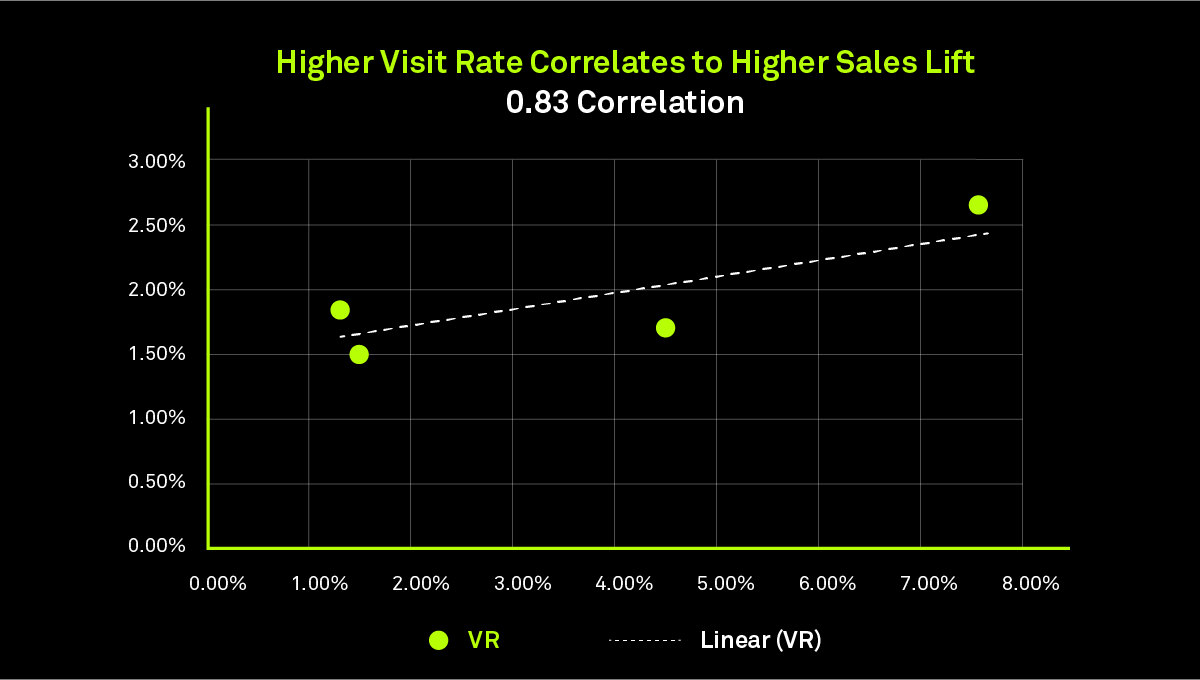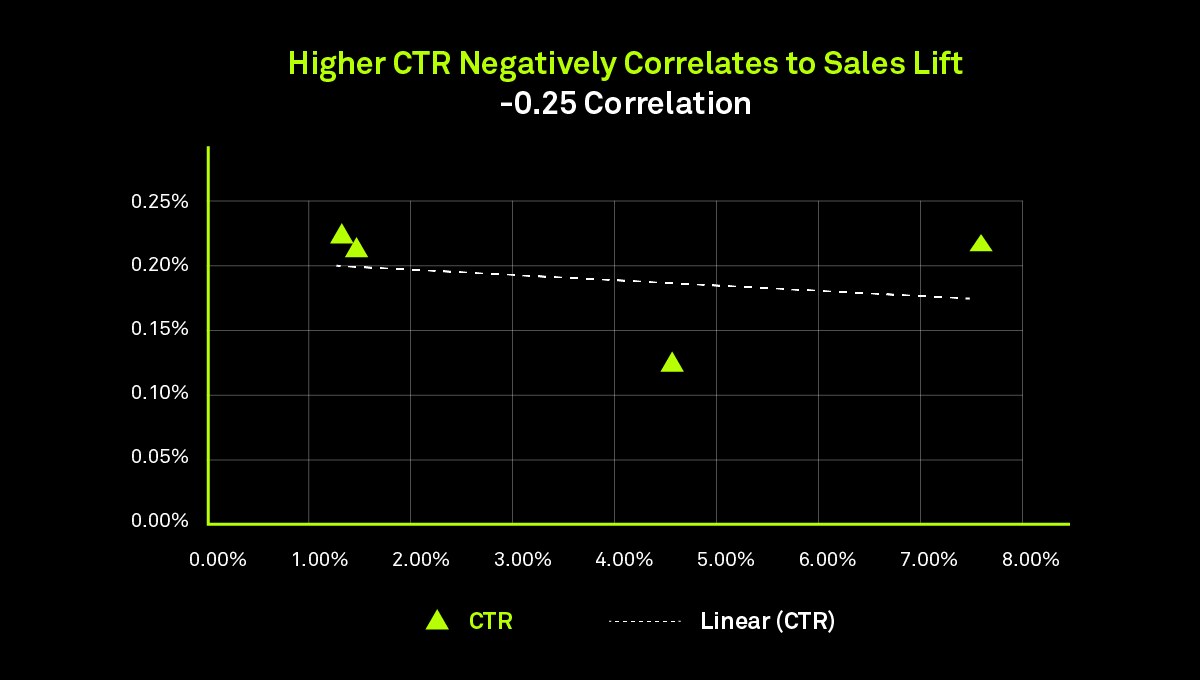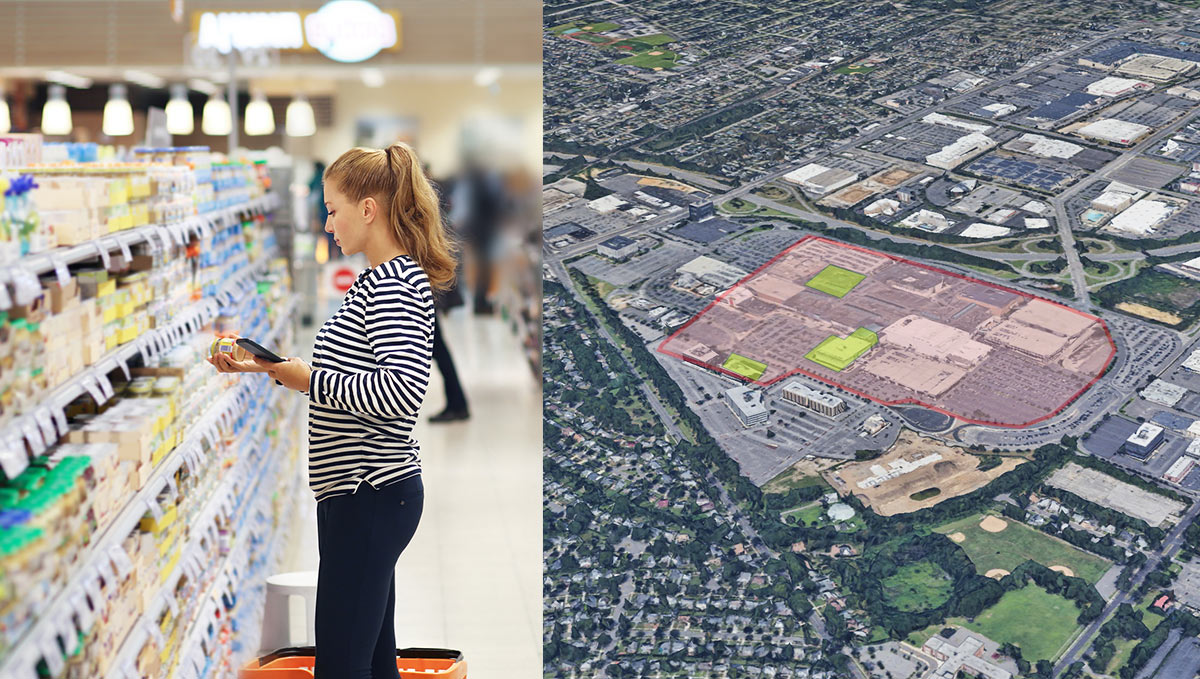One of the biggest challenges facing digital marketers today is determining the effectiveness of their ads. Brands are eager to generate positive outcomes, and so they approach their campaigns with a sharp focus and keen eye. This comes part and parcel with campaign analysis — the more in-depth, the better.
Clicks and engagements routinely crop up as key indicators of both audience intent and overall campaign performance. When you’re looking to drive an online outcome — whether it’s online conversions, requests for additional information, or sign-ups — this makes a lot of sense. But what about when you’re driving an offline outcome, as in a store visit or in-store sales? Do ad engagements still matter then?
At GroundTruth, we recently asked ourselves that very question. Given our ability to discern real-world behavior through our industry-leading location technology, the majority of our clients choose to leverage our solutions to drive offline outcomes. For our CPG and Shopper Marketing clients, this often includes driving in-store sales at specific stores and retailers. This requires a thorough understanding of campaign metrics. Which metrics have the strongest correlation to offline sales performance, specifically for the CPG category?
To get the answer, we performed an internal study designed to gauge the correlation between sales lift on campaigns measuring visits, versus campaigns measuring engagements. What did we find out?
Let’s take a look.
The Test
From ad creative to time of day, there are countless different factors that can impact campaign performance. To account for these, we designed our test to control numerous variables ranging from ad messaging to impression volume and time period, type of product being advertised, type of retailer, and others.
The ideal scenario presented itself in the form of one of our existing clients, which was looking to support four different brands over the same time period at the same retailer, while also measuring sales performance across all four campaigns. These objectives allowed us to test multiple variables for improved accuracy, and determine which of them correlated most closely with sales performance.
The Results
What we found was that two brands in particular showed strong sales performance, while the other two brands in the campaign generated fewer sales. While click-through rate was fairly consistent across all four brands due to their similar creative message and formats, store visit rate varied across the programs. The lowest performing brands saw the lowest visit rate, and the top performing brands saw the highest visit rate.
According to our analysis, top line results suggested that the more in-store visits the campaign generated, the better the sales performance. Naturally, this bodes well for marketers investing in location-based campaigns — and the logic of this outcome is crystal clear. The more in-store visits a campaign generates, the more opportunities the advertiser has to generate sales in that physical store.
To gain an understanding of the correlation between engagements and sales, as compared with the correlation between store visits and sales, we took our analysis one step further.
The results were eye-opening, to say the least:
- Visit Rate (visits / impressions) showed a 0.83 correlation to sales lift
- Click-through rate (clicks / impressions) showed a -0.25 correlation to sales lift


How does this data help digital marketers? It confirms that driving foot traffic to physical stores can have a colossal impact on sales. We’ve also long suspected, and other studies have confirmed in the past, that generating online clicks doesn’t drive offline sales, and our analysis clearly supports that theory. Whether your company is a retailer or a CPG brand, location-based advertising and its positive influence on consumer foot traffic should be viewed as a critical component of digital marketing campaigns.
Interested in learning more about how location targeting can improve your sales lift? Contact us to speak to a GroundTruth CPG specialist today.





